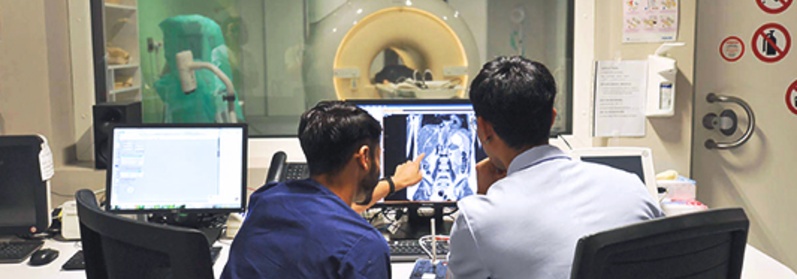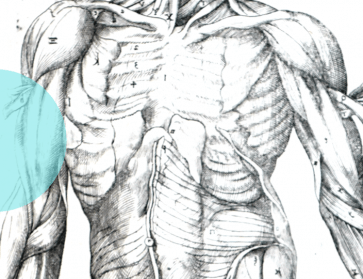Pre-Course
Wroclaw Medical University invites all students admitted to the first year of studies at the University in the fields of Medicine and Dentistry in English to participate in the pre-course. The pre-course is recommended by the authorities of Wroclaw Medical University.
The educational goals of the pre-course are as follows: thoroughly revising previous knowledge before entering the university; systematizing knowledge acquired so far; filling in new information; and acquiring medical terminology in English.
The subjects taught during the pre-course are:
Chemistry, Biology, Physics, Anatomy and Polish language - all taught by teachers with teaching experience at university level.
The cost of the pre-course is 3000 PLN plus the cost of access to the textbooks.
The cost of access codes to the electronic version of the textbooks* is 810 PLN. Payment has to be transferred into the individual bank account number assigned to each student. Please write your name and 'textbooks' as the title of the transfer. The deadline for for your payment is 16th August 2024.
*Titles of the textbooks:
Campbell Neil et al., Biology: A Global Approach 12th Edition with Pearson Mastering Biology
Timberlake Karen C., Chemistry: An Introduction to General, Organic and Biological Chemistry Plus Pearson Mastering Chemistry, Global Edition, 13th Edition
NOTE: Please bring your own electronic device with access to the Internet.
The pre-course lasts three weeks, from 8th September to 26th September 2025, and it takes place in the lecture hall of the Department of Anatomy, Wrocław, ul. T. Chałubińskiego 6a (map, building). Please arrive at 8:15 a.m.
If you need a place in the dorm during the pre-course, please remember to contact the person responsible for assigning places in the dorm: anna.kardela@umw.edu.pl. You can find application forms for a place in the dorm either in the IRK system or here.
If you wish to take part in the pre-course, please send an application (found below) to the e-mail address: agnieszka.czuczwara@umw.edu.pl. The payment should be sent to your individual bank account, the same one as the tuition fee account, by 16th August 2025. Please write 'pre-course' as the title of the transfer.
Syllabus for Chemistry, Biology, Physics, Anatomy, Polish language
Chemistry:
1A Atoms and elements: the periodic table, atomic and mass numbers, electronegativity
1B Ionic and covalent bonds. Characteristics of single, double and triple bonds. Saturated and unsaturated hydrocarbons. Constitutional isomers.
2A Solutions. Electrolytes and nonelectrolytes. Solubility. Acids and bases and equilibrium.
2B Solution chemistry
3A Chemical measurements
3B Chemical calculation
4A Cyclic and aromatic hydrocarbons. Conformation of cycloalkanes. Heterocyclic compounds and their derivatives.
4B Alcohols: properties and reactions. Multihydroxylic alcohols (glycerol). Aldehydes and ketones. Oxidation of aldehydes to acids.
5A Inorganic and organic acid and base
5B Amines and amides: properties and reactions
Biology:
Comparison of prokaryotic and eukaryotic cell structure, functions of cell’s organelle, structure and function of nucleic acids (DNA and RNA), Mendel’s Laws of inheritance – monohybrid crosses, independent genes assortment – dihybrid crosses, exceptions to Mendel's Laws; cytoplasmic inheritance; X-linked inheritance; epigenetics, mutagens, types of point mutations and their consequences, structural and numerical chromosomal aberrations.
Physics:
Basic physical units according to the SI system, norms of length, mass and time. Scalar units and vector units. Basic operations on vectors. Mechanics: basic definitions – distance, velocity, acceleration, force, work, power, energy. Description of forces. Types of energy. Linear motion and circular motion. Newton’s laws of dynamics. Energy conservation law and momentum conservation law. Introduction in thermodynamics – basic definitions, a short description of thermodynamic functions, I-st and II-nd law of thermodynamics. Characteristics of basic physical phases of matter: solid, liquid and gaseous. Phase transitions and their thermodynamics, state of thermodynamic equilibrium and steady-state. Electricity – Coulomb’s law, electric field, electric dipole, electric potential, voltage, electric capacitance. Characteristics of an electric current, Ohm’s law and Kirchoff’s laws, electromotive force, conductors and insulators, measurements of voltage and current. Magnetism – magnetic field and its sources, Lorenz law, magnetic flux, electromagnetic induction, Faraday’s law and Lenz’s law. Classification of substances on the basis of their magnetic properties. Introduction in optics – dualistic corpuscular-wave nature of light. Light as an electromagnetic wave. Characteristics of oscillations and waves. Evidence for the wave nature of light – phenomena of light diffraction, interference and polarisation. Evidence for the corpuscular character of light – photoelectric effect and Compton’s effect. Reflection and refraction of light. Characteristics of lenses – focusing and scattering, thin and thick lenses. Introduction in nuclear physics – structure of an atom according to the Bohr Model. Structure of a nucleus of an atom. Elements and their isotopes. Basic quantum numbers.
Anatomy:
1. Essential information about the types of tissues in the macroscopic aspect, for example differentiation of the cortical and cancellous bone, comparison of fibrocartilage and hyaline cartilage, essentials of, and differences in, the mechanics of muscle and tendon contraction, morphological differentiation of arteries and veins, functional and structural interdependence between nervous and glial tissues, introduction to the general structure of parenchymal and tubular organs.
2. Introduction to the history and methodology of coining anatomical terms (including familiarising the students with the museum of anatomy).
3. Familiarising the students with equipment used for anatomical dissections, introduction to the human body (description of bodily regions), presentation of a film about embalming (we would have to prepare one).
4. An additional 'highlight' would be a presentation of an ultrasound image of the human body, for example: based on the thyroid gland.
5. Tradition and contemporary issues of the Wrocław school of Anatomy.
Polish language:
I. Polish language in speech and writing: speaking, writing and reading in Polish
II. Grammar: questions identifying people and things, asking for information, place, time, conjugations, personal pronouns, adverbs, numerals
III. Communication: introducing yourself and other people, greetings and farewells, personal information, free time, life at university, cultural and social life, shopping, everyday life dialogues, renting an apartment.
 Szukaj
Szukaj



